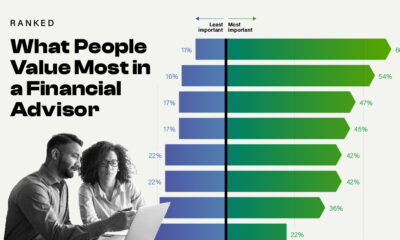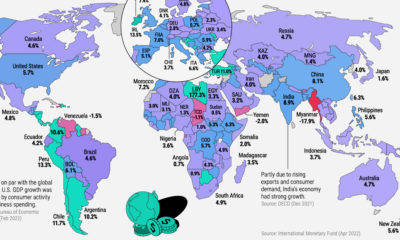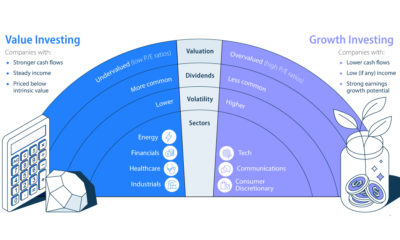This Markets in a Minute Chart is available as a poster.
How Did Investors React to the COVID-19 Outbreak?
Throughout Q1, investors faced a truly remarkable period of volatility.
For starters, the S&P 500 fell by 30% from its record high in February, achieving the feat in just 22 trading days—the fastest such decline in history. Outside of capital markets, economic damage was abundant. Lockdown orders left entire industries struggling to survive, and unemployment claims across America skyrocketed.
In today’s Markets in a Minute chart from New York Life Investments, we analyze Q1 fund flow data to find out how U.S. investors navigated these highly uncertain times.
Seeking Shelter
A key theme of Q1 2020 was risk aversion, as evidenced by the $670B net inflow to money markets. Money market securities are an ideal investment during volatile periods, thanks to their relatively low risk and high liquidity.
Also of significance was the flow differential between the two main types of investment vehicles. By the end of March, net flows to mutual funds reached $400B, compared to just $58B to ETFs. This difference was fueled by the aforementioned demand for money markets, as mutual funds are the predominant vehicle used to access this asset class.
Below, we break down net flows by asset class, between ETFs and mutual funds:
| Asset Class | ETF Flows | Mutual Funds Flows | Net Flows (Q1 2020) |
| Money Market | -- | +$670B | +670B |
| International Equity | -$1B | +$21B | +$20B |
| Commodities | +$9B | -$1B | +$8B |
| Alternatives | +$7B | -$7B | -$0.1B |
| Sector Equity | -$4B | -$7B | -$11B |
| Municipal Bonds | +$1B | -$21B | -$20B |
| U.S. Equity | +$37B | -$59B | -$22B |
| Allocation | -$0.2B | -$33B | -$33B |
| Taxable Bonds | +$9B | -$163B | -$154B |
| Total | +$58B | +$400B | +$458B |
Source: New York Life Investments (March 2020)
Taxable bonds fared the worst in terms of net flows, with -$154B pulled from both corporates and governments. This may come as a surprise, as these investments are generally considered to be safer than equities—so why were they sold off in such large amounts?
One trigger was the economic shock of COVID-19, which brought the creditworthiness of many U.S. companies into question. This issue is likely exacerbated by the record levels of corporate debt amassed prior to the disease hitting American shores.
The U.S. government’s rapidly rising fiscal deficit may be another trigger. If the supply of government debt were to overwhelm markets, the value of government bonds would fall, and investors would lose capital. It’s estimated that $4.5T will need to be borrowed to fund the government’s numerous COVID-19 support programs.
U.S. Equities Divided
Although U.S. equities saw net outflows in Q1, a deeper dive into the flow data uncovers a much more nuanced story. For example, with the exception of February, U.S. equity ETFs and mutual funds saw opposing net flows.
| Vehicle Type | January Flows | February Flows | March Flows |
| ETFs | +$14B | -$2B | +$25B |
| Mutual Funds | -$28B | -$11B | -$20B |
| Total | -$14B | -$13B | +$5B |
Source: New York Life Investments (March 2020)
Overall, ETFs saw net inflows of $37B, while mutual funds saw net outflows of $59B. These findings suggest a strong investor preference for passively-managed products. Breaking down U.S. equity flows by investment style highlights another inequality.
| Investment Style | Net Flows (Q1 2020) |
| Blend | +$27B |
| Growth | -$35B |
| Value | -$14B |
Source: New York Life Investments (March 2020)
Growth strategies prioritize capital appreciation, while value strategies seek stocks that pay dividends and are trading at a discount. Blend strategies, the only style to attract net inflows in Q1, offer investors a mix of both.
Betting on Oil
Within commodities, investors added $7B to precious metals funds. These inflows were not a surprise, given gold and silver’s status as safe-haven assets.
The only other subcategory to attract net inflows was energy—investors bet on a rise in the price of oil, adding $3B to energy funds over the quarter. Of this amount, $2B was added in March. Since then, oil prices have continued to slide (even falling below zero) due to plummeting demand and oversupply.
What’s in Store for the Rest of 2020?
Volatility is likely to continue throughout 2020. Uncertainty surrounding the duration of the pandemic remains, with countries such as South Korea and China reporting a resurgence in cases. Further questions arise as central banks, including the U.S. Federal Reserve, continue to provide unprecedented levels of stimulus.
Nevertheless, sticking to a long-term investment plan, and avoiding common psychological pitfalls, can help investors prepare for whatever comes next.

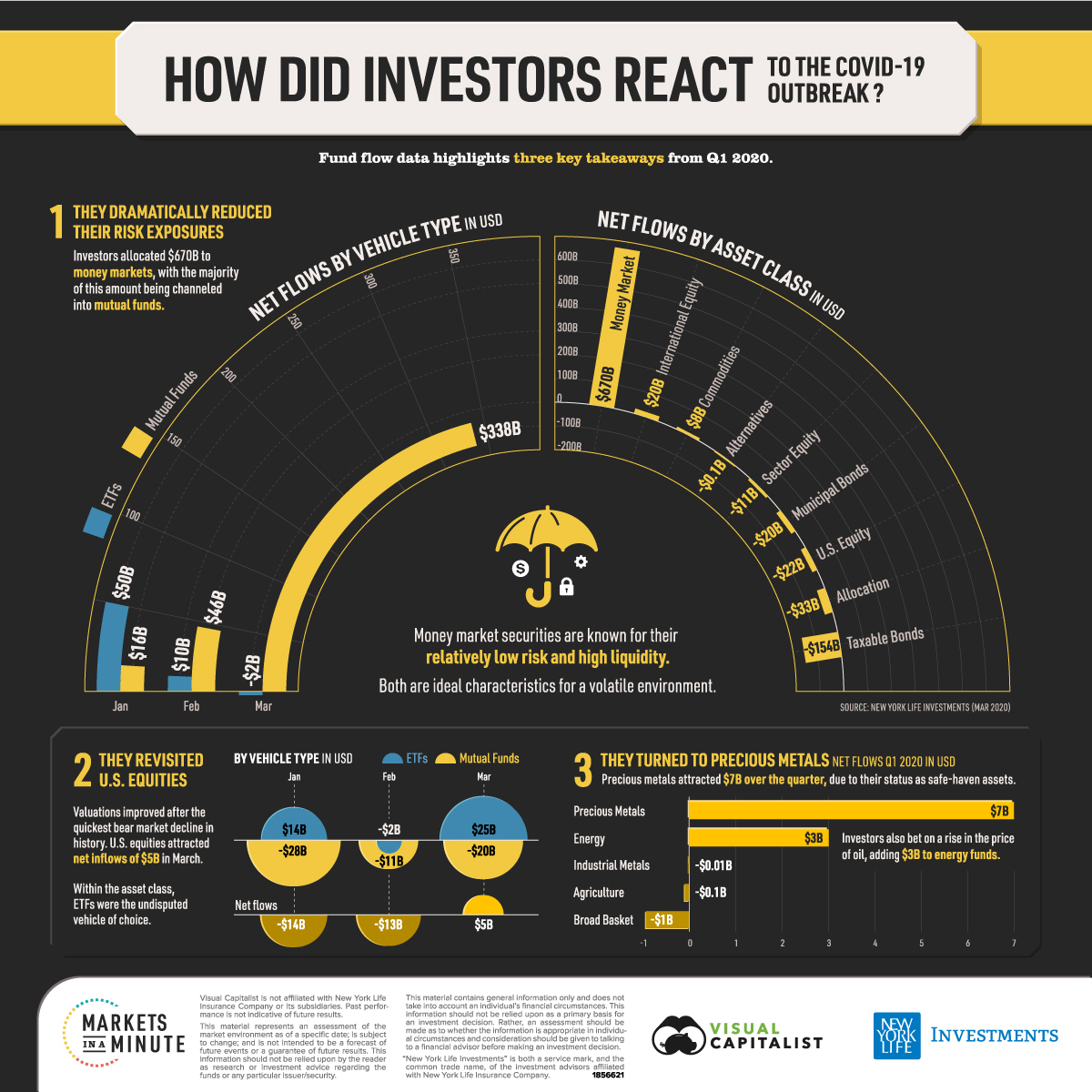
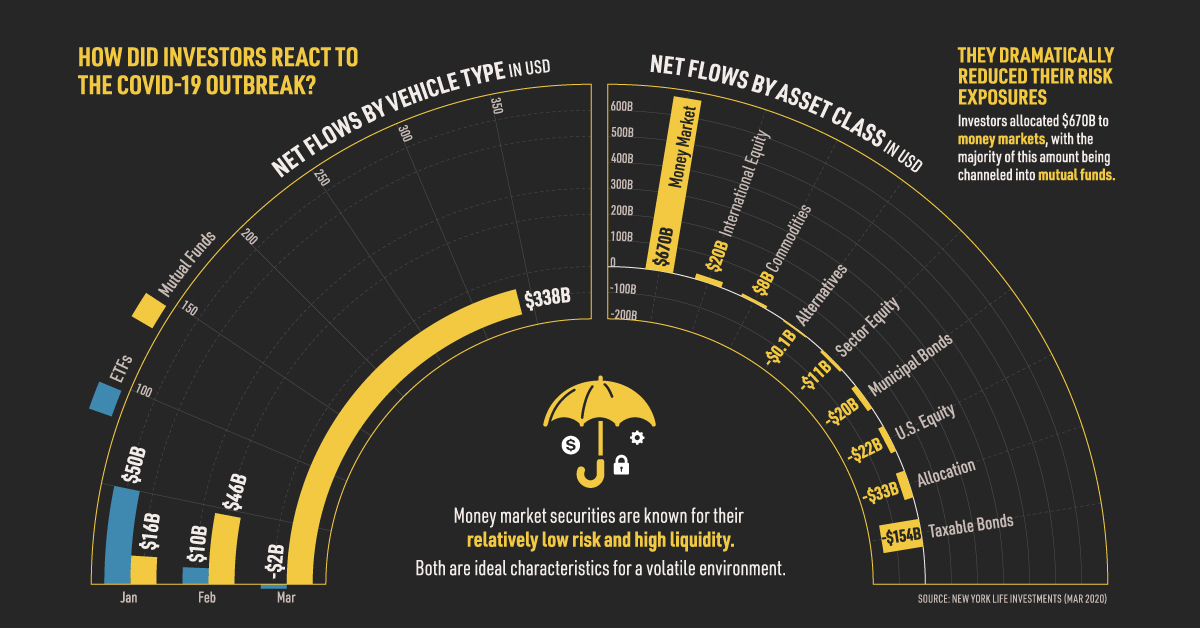

 Infographics2 years ago
Infographics2 years ago
 Markets in a Minute2 years ago
Markets in a Minute2 years ago
 Markets in a Minute2 years ago
Markets in a Minute2 years ago
 Infographics2 years ago
Infographics2 years ago
 Markets in a Minute1 year ago
Markets in a Minute1 year ago
 Markets in a Minute2 years ago
Markets in a Minute2 years ago
 Infographics1 year ago
Infographics1 year ago
 Markets in a Minute2 years ago
Markets in a Minute2 years ago



